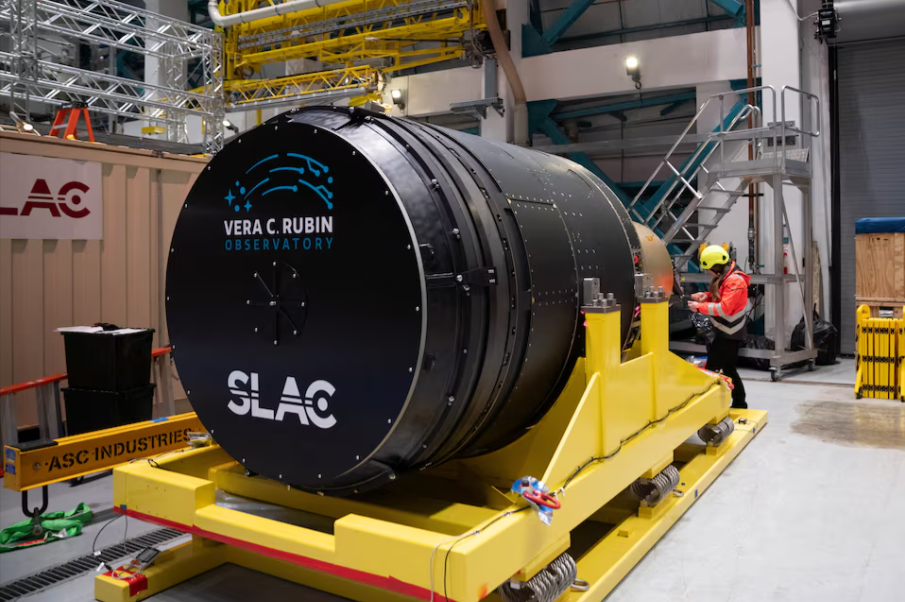
©Olivier Bonin/SLAC National Accelerator Laboratory/Handout via REUTERS
Vocabulary:
- behemoth /bih-HEE-muhth/
- audacious /aw-DEY-shuhs/
- elucidate /ih-LOO-si-deyt/
- comprise /kuhm-PRAHYZ/
- intrinsic /in-TRIN-sik/
[noun] – something that is extremely large and often extremely powerful
The new aircraft carrier is a behemoth, dominating the naval fleet with its immense size and power.
[adjective] – showing a willingness to take bold risks
The startup’s audacious plan to revolutionize the tech industry attracted significant investor interest.
[verb] – to explain something or make something clear
She elucidated the complex scientific concept with simple, easy-to-understand examples.
[verb] – to consist of or be made up of
The new curriculum comprises courses in science, technology, engineering, and mathematics.
[adjective] – belonging naturally or being an essential part of something
The scientist’s passion for discovery is intrinsic to her work in unraveling the mysteries of the universe.
Article reading:
The Rubin Observatory signifies a monumental leap in astronomical technology and exploration, integrating an eight-meter wide-field telescope with an automated data processing system to handle an estimated nightly data influx of 20 terabytes. Over the course of its ten-year mission, it is anticipated to accumulate a colossal catalog database totaling 15 petabytes. The core ambition of this grand scientific endeavor is to elucidate the enigmatic properties of dark energy and dark matter, constituents known to comprise the vast majority of the universe, yet remain poorly understood. Additionally, the observatory will scrutinize celestial phenomena, including potential asteroid collisions with Earth and the dynamics of proximal stars and planets. Through extensive celestial surveillance, the project aims to deepen understanding of the universe’s origins and evolution while bolstering planetary defense against extraterrestrial threats. Led by the AURA consortium and overseen by Stuartt Corder, this endeavor exemplifies the harmonious fusion of cutting-edge technology and intrinsic human curiosity in unraveling the cosmos’ ancient mysteries.
Discussion Questions:
- Have you ever visited an observatory or experienced viewing the night sky through a powerful telescope? If yes, what was the most fascinating aspect of your experience? If not, would you be interested in visiting a place like the Vera C. Rubin Observatory to witness the capabilities of the world’s largest digital camera in astronomy? Why or why not?
- Have you had the opportunity to learn about or observe celestial events, such as meteor showers, eclipses, or planet alignments? If yes, how did that experience impact your interest in astronomy? If not, what kind of celestial event would you be most interested in observing and why?
- Do you think it’s worth investing in large observatories like the Vera C. Rubin Observatory to study phenomena such as dark matter and dark energy?
- What factors do you believe should influence the allocation of funding and research priorities? How might the balance between practical space-related challenges and theoretical research like dark matter be determined, and what implications could this have for our understanding of the cosmos and its practical applications?
- What role should international cooperation play in supporting these large-scale scientific endeavors?
Summarization
Describe:
- optical astronomy
- decade-long
- astronomical
- extraterrestrial
- celestial phenomena